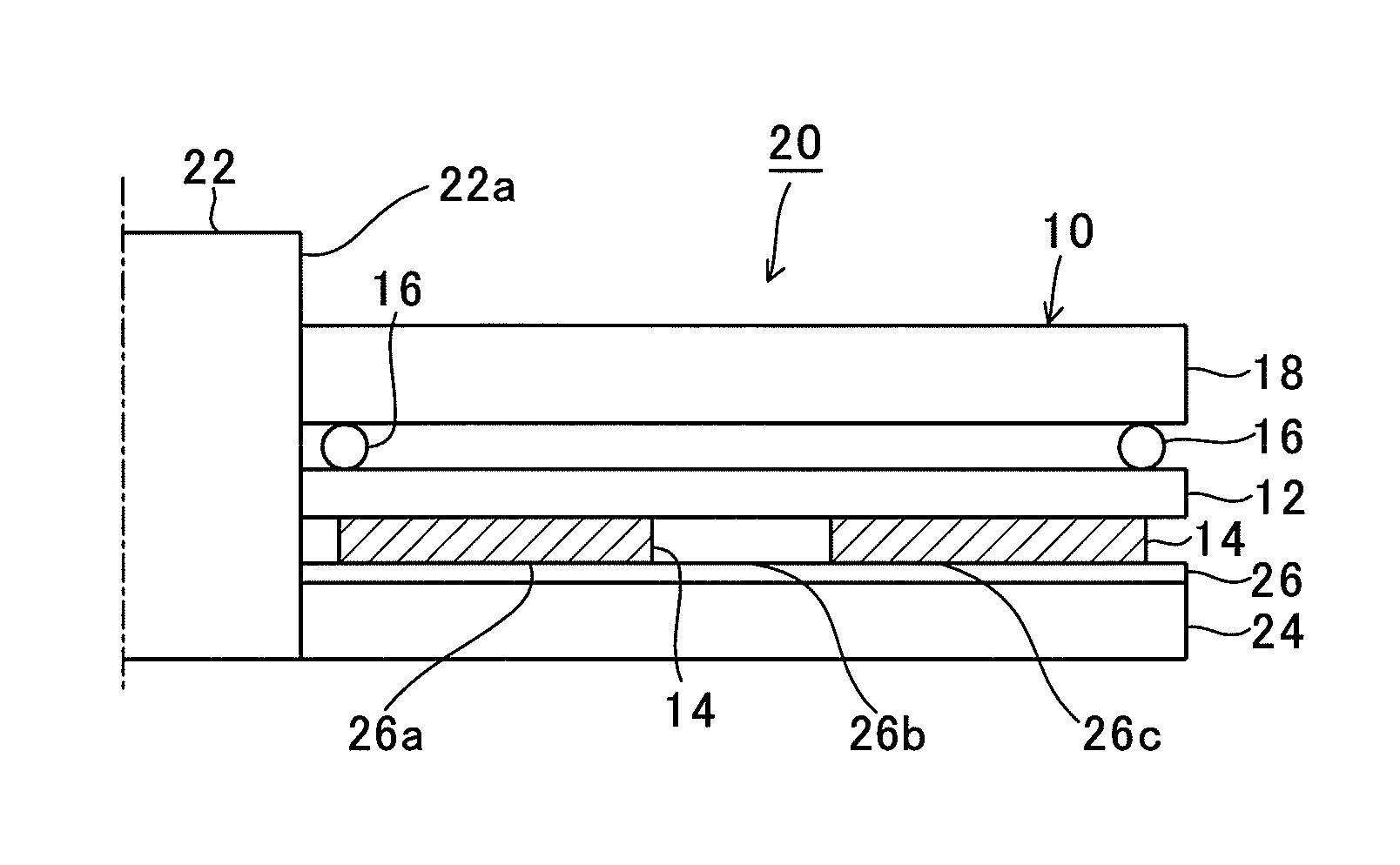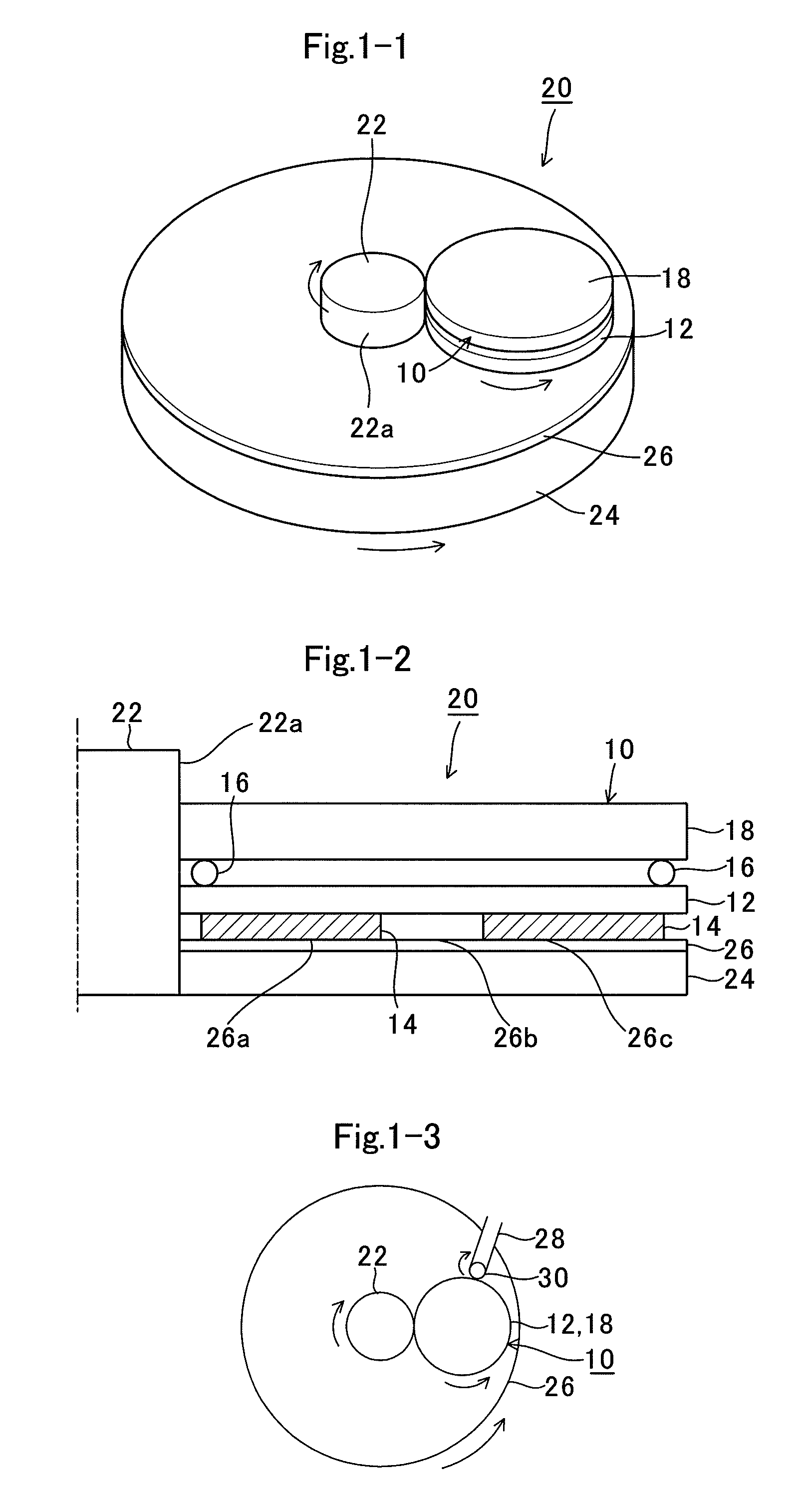Polishing pad seasoning method, seasoning plate, and semiconductor polishing device
a technology of semiconductor polishing and polishing pad, which is applied in the direction of grinding drive, grinding drive, abrasive surface conditioning device, etc., can solve the problems of reducing the polishing efficiency of wafers, deteriorating polishing pads, and difficult to form minute circuit patterns, so as to prevent the appearance of inflection points in the pad surface of polishing pads due to conditioners and achieve uniform variations in polishing pads. , the effect of simple structur
- Summary
- Abstract
- Description
- Claims
- Application Information
AI Technical Summary
Benefits of technology
Problems solved by technology
Method used
Image
Examples
Embodiment Construction
[0065]The following is a description of an embodiment of a polishing pad seasoning method, a seasoning plate, and a semiconductor polishing device according to the present invention, with reference to the accompanying drawings. The components and the types, combinations, shapes, and relative positions of the components described in the embodiment are merely examples and do not restrict the scope of the invention to those examples, unless otherwise specified.
[0066]FIG. 1-1 is a perspective view of a seasoning plate and a semiconductor polishing device according to this embodiment. FIG. 1-2 is a partial cross-sectional view of the structures shown in FIG. 1-1, and FIG. 1-3 is a plan view of the structures shown in FIG. 1-1. By a polishing pad seasoning method according to this embodiment, a polishing pad is ground by the friction caused by rotating the polishing pad. Conditioners for grinding the polishing pad are attached to the bottom face of a round flexible substrate, and a ring t...
PUM
| Property | Measurement | Unit |
|---|---|---|
| friction | aaaaa | aaaaa |
| flexible | aaaaa | aaaaa |
| weight | aaaaa | aaaaa |
Abstract
Description
Claims
Application Information
 Login to View More
Login to View More - R&D
- Intellectual Property
- Life Sciences
- Materials
- Tech Scout
- Unparalleled Data Quality
- Higher Quality Content
- 60% Fewer Hallucinations
Browse by: Latest US Patents, China's latest patents, Technical Efficacy Thesaurus, Application Domain, Technology Topic, Popular Technical Reports.
© 2025 PatSnap. All rights reserved.Legal|Privacy policy|Modern Slavery Act Transparency Statement|Sitemap|About US| Contact US: help@patsnap.com



